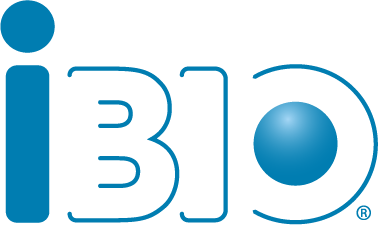In the United States, a rare disease is defined as a condition that affects fewer than 200,000 people. Each year on February 28, the rare disease community joins together on Rare Disease Day to raise awareness of as many as 7,000 rare diseases affecting an estimated 25-30 million Americans. It is a day where the collective voices of patients and families impacted by rare diseases advocate for more research and better access to diagnosis and treatment. In observance of Rare Disease Day, Lundbeck looks to shine a spotlight on a rare condition called neurogenic orthostatic hypotension (nOH).
What is nOH?
nOH is a condition that causes abnormally low blood pressure after standing in people with nervous system disorders. Because this condition cause damage to the nervous system, the body may not release enough of a chemical called norepinephrine, which helps to keep blood pressure from dropping too low. Without enough norepinephrine, blood pressure remains low after standing, which may result in symptoms like dizziness, lightheadedness, blurry vision, or fatigue.
Who Experiences nOH?
Those who are living with neurodegenerative conditions, like Parkinson’s disease (PD), multiple system atrophy (MSA) and pure autonomic failure (PAF), can be at risk for this condition. Although considered rare, symptomatic nOH is estimated to affect 20% of patients who have PD, 80% of those living with MSA and nearly 100% of PAF patients.
Understanding the Symptoms of nOH.
There are a variety of symptoms associated with nOH. Some of those are:
- dizziness
- lightheadedness
- blurred vision
- nausea
Symptoms of nOH can be non-specific so its important people don’t attribute their symptoms to their underlining neurodegenerative disorder, rather than a separate and manageable condition.
How is nOH Diagnosed?
Like many of those living with a rare disease, patients with nOH may face a long path to diagnosis. nOH should be diagnosed by a physician and usually consists of taking a patient’s blood pressure readings while standing and sitting or during a tilt-table test, along with monitoring heart rate.
Three Tips for Anyone Who May Think They Have nOH:
If you or a loved one who is living with a neurodegenerative condition is experiencing symptoms of nOH, here are three tips to help you take action and begin a discussion with your physician:
- Get to Know Your Symptoms: Patients and family members of those living with PD, MSA or PAF should monitor for symptoms of lightheadedness, dizziness or blurred vision upon standing, as these may be potential signs of nOH. A symptom checker is available at nohmatters.com.
- Keep Track of Your Symptoms: Capturing the details of what you are experiencing as it happens will help you and your physician recognize potential patterns. A symptom tracker can be found at nohmatters.com.
- Reach Out to Your Doctor: It is important that you discuss everything, no matter how minor it may seem, with your healthcare team. A doctor discussion guide is also available at nohmatters.com to help you begin the conversation.
For more information and resources about nOH and management specifically, visit www.nohmatters.com.
References
- Rarediseases.info.nih.gov. 2020. Faqs About Rare Diseases | Genetic And Rare Diseases Information Center (GARD) – An NCATS Program. Avaliable at: https://
rarediseases.info.nih.gov/diseases/pages/31/faqs-about-rare-diseases. Accessed December 20, 2020.
- Freeman R, Wieling W, Axelrod FB, et al. Consensus statement on the definition of orthostatic hypotension, neurally mediated syncope and the postural tachycardia syndrome. Clin Auton Res. 2011;21(2):69-72.
- Metzler M, Duerr S, Granata R, Krismer F, Robertson D, Wenning GK. Neurogenic orthostatic hypotension: pathophysiology, evaluation, and management. J Neurol. 2013;260(9):2212-2219. 4. Perlmuter LC, Sarda G, Casavant V, et al. A review of orthostatic blood pressure regulation and its association with mood and cognition. Clin Auton Res. 2012;22(2):99-107.
- Goldstein DS, Sharabi Y. Neurogenic orthostatic hypotension: a pathophysiological approach. Circulation. 2009;119(1):139-146.
- Ha AD, Brown CH, York MK, Jankovic J. The prevalence of symptomatic orthostatic hypotension in patients with Parkinson’s disease and atypical parkinsonism. Parkinsonism Relat Disord. 2011;17(8):625-628.
- Freeman R. Clinical practice. Neurogenic orthostatic hypotension. N Engl J Med. 2008;358(6):615-624.
- Kaufmann H, Palma JA. Neurogenic orthostatic hypotension: the very basics. Clin Auton Res. 2017;27(Suppl 1):39-43.
©2021 Lundbeck. All rights reserved. UBR-D-100869

